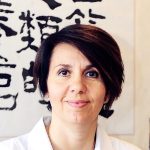What Exercise is Best for Women as They Get Older?
This is part of our “In Medical News” series where Dr. Sara Laudani shares a study or article in recent news and offers some analysis and tips about the news, to help patients stay informed.
A study of two different exercise programs showed significantly more gains for women participating in a high-intensity program over those in a low-intensity Pilates program. The participants were 115 postmenopausal women with low bone mass. Most of the women were not taking osteoporosis medications. For those who were, the effects of exercise appeared to be enhanced. Both groups participated in twice weekly supervised workouts.
The 8-month high-intensity resistance and impact training program (HiRIT, Onero) led to greater gains in lumbar spine bone mineral density (BMD) and leg and back strength than the low-intensity Pilates-based program (Buff Bones). The low intensity class did improve function, but to a lesser extent. However, as one of the researchers noted, “the contribution of functional capacity to risk of falling and fracture cannot be overstated, and bone medications do not address function.” Other studies have also confirmed that exercise of any intensity reduces the risk for falls.

The study also demonstrated that such exercise programs can be used safely, though it is important to note that both were supervised, and this can be a vital factor for risk-reduction and consistency. The findings reinforce the idea that high-intensity exercise can be more effective for bone health and can be done safely by this population.
Understanding the factors involved:
The mechanics of resistance and personalized, guided mild impact exercises, through repetitive muscle contractions (lifting weights, pushing, or pulling against resistance) deliver a specific message from the muscles to the tendons. Tendons are the fibro-elastic structures connecting muscles to the skeleton. As consequence, the tendons also pull their insertion from the bones’ surfaces. This step is of extreme important because the pulling tension “informs” the bone cells that they have to keep working in a “budling up” (anabolic) mode. Moreover, this mechanism favors a stable or growing muscle mass, tendons elasticity and bone structure adjustments towards preserving the bone mass and structure.

On the contrary, in a sedentary life, which lacks both kind of movements, the muscle mass decreases progressively, and fatty tissue substitutes for the muscle. Additionally, the tendons became progressively stiff and tend to calcify, becoming more fragile and the bone structure (being informed by the resting state that the machine – our body – is not working) tends to dismiss its minerals (catabolic state), particularly calcium, and to became fragile and prone to tears.
What this means to you:
This was a small study on a specific group, using only two exercise programs, so it is important not to generalize too widely. However, we can safely conclude from this and other research that exercise is vital to healthy aging, especially reducing falls and injuries and maintaining functional health. For bone health, more intense exercise may have an additive effect to generally being active and medications, where indicated (along with healthy diet and more). Simply understanding the body’s mechanics paints a clear picture of what the body needs to continue functioning smoothly. You’ve got to work it to keep it working!
Take-aways:
• Keep moving! Find forms of movement/exercise that you enjoy so you’ll do them on a regular basis. What’s best? There likely is not just one answer. Bone density is only one aspect of health and women can benefit from all types of exercise for strengthening (and even targeted strength of certain areas that may be weak or especially protective), cardiovascular health, balance, and improving functionality.
• Consider varying it up and trying some more high-intensity or weight-bearing exercises for bone health, especially as you age and if you have risks of or signs of osteoporosis. Resistance is important to maintaining muscle mass and bone strength.
• Speak to your medical professionals about the best options and what is safe for you.

Dr. Sara Laudani offers consultations in internal medicine and functional and nutritional medicine in our Hongmei Road Clinic – Hongqiao. Click here to schedule an appointment with her and find out how her holistic approach can help you resolve your health issues.
Reference: https://www.medscape.com/viewarticle/960972
